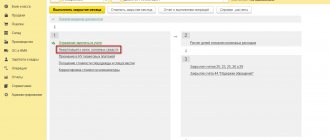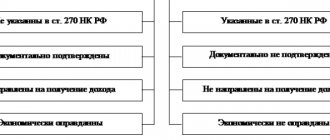Reasons for early repurchase of the leased asset
In relation to loan agreements, early repayment is a fairly common occurrence. In this case, the bank must recalculate, but in the case of leasing the situation will be somewhat different. The possibility of early repayment of leased property exists and there may be completely different reasons for this, for example:
- The company has available funds and wants to reduce overpayments. It should be remembered that without additional approvals, it is not always possible to recalculate interest under a leasing agreement.
- The leased property must be urgently transferred to the ownership of the organization. Such a need may arise, for example, in the event of a sale of a company or when concluding transactions related to a company takeover or merger.
- The conditions for using the property have changed. As a rule, the leasing agreement specifies clear conditions for limiting the use of the leased property. For example, when transferring such property to a third party, it will be necessary to obtain approval from the lessor or to purchase the property.
Important! The lessor can also act as the initiator of the early repurchase of the leased asset. For example, this is possible if there is a significant deterioration in the financial situation of the lessee.
Leasing on the lessee's balance sheet in 1C using the example: receipt, payment, redemption of OS
Leasing is a financial lease agreement. According to its terms, there is a lessor (lessor) and a lessee (lessee).
The lessor buys some property. Then it transfers it to the lessee for temporary possession for a fee. In this case, the property remains the property of the lessor. At the end of the contract, the lessee can buy the property.
Let's look at how to reflect receipt of leasing in 1C 8.3 Enterprise Accounting. In the example with postings, we will look at how to keep records of equipment on the lessee’s balance sheet.
Situation:
The organization leased a Ford minibus. According to the terms of the agreement, leasing payments are paid within 36 months in the amount of 50,000 rubles. The total amount is 1,800,000 rubles.
Subsequently, the lessee buys the minibus. Therefore, an additional cost of 200,000 rubles is paid. This amount is also divided into 36 months. The total amount of payments is 2,000,000 rubles.
The vehicle is immediately accepted for registration with the lessee.
How to enable leasing accounting functionality
First of all, we will enable the functionality of leasing receipts. To do this, go to the “Main - Settings - Functionality” menu and on the “OS and intangible assets” tab, check the “Leasing” checkbox.
Arrival of a minibus for leasing
Let's go to the menu “Fixed assets and intangible assets - Receipt of fixed assets - Receipt of leasing” and create a new document.
We indicate the lessor and the contract, the vehicle and the cost. Set the settlement account to 76.07.1 “Rental obligations”. Item accounting account - 08.04.1.
Document postings:
Acceptance of a minibus for registration
Since the minibus is registered with the lessee, it must be taken into account. To do this, we will create a document “Acceptance of asset accounting” with the type of operation “Equipment”.
On the “Non-current asset” tab, indicate the method of receipt of fixed assets “Under a leasing agreement”, select the lessor and the agreement.
On the “Fixed Assets” tab, create and add a fixed asset.
On the “Accounting” tab we indicate:
- Accounting account 01.03 “Leased property”.
- Depreciation account 02.03 “Depreciation of leased property.”
- Depreciation calculation settings: calculation method, accounting option, useful life.
On the “Tax Accounting” tab, we will establish that we will calculate depreciation and indicate the leasing parameters:
- The initial cost is the amount of the lessor's expenses to purchase the property.
- Method of reflecting expenses for tax accounting.
We will also indicate the useful life.
Let's go through the document and look at the postings.
The minibus was registered as a rented vehicle.
Calculation of leasing payments
The leasing payment will be calculated every month. To do this, we will create a document “Receipts (acts, invoices) with the type of operation “Leasing services”.
In the document:
- We indicate the date and organization.
- We choose a lessor and a contract.
- In the “Settlements” section, we will set the account for settlements with the counterparty 76.07.2 “Debt on leasing payments”. We leave the advances accounting account at 60.02.
- In the tabular section, select the item and indicate its cost. In the example, the leasing payment is 50,000 rubles.
Posting a document.
Payments in subsequent months are calculated in the same way.
Depreciation calculation
Every month, at the end of the month, depreciation on the leased property is automatically calculated.
In postings, depreciation is taken into account on account 02.03.
Also, at the close of the month, leasing payments are recognized in tax accounting.
Payment of leasing payment
To pay the lessor, we will create a document “Write-off from current account” with the transaction type “Payment to supplier”.
Under the terms of the agreement, we pay the lease payment amount of 50,000 rubles, as well as part of the redemption price of 5,555.55 rubles. (RUB 200,000 / 36 months).
Let's look at the document postings.
- According to Dt 76.07.2, leasing debt will be gradually repaid.
- According to Dt 60.02, an advance on the redemption value of the property is reflected.
Payments are made in the same way in subsequent months.
Redemption of leased property
At the end of the contract, the minibus becomes the property of the lessee.
To reflect this operation, we will create a document “Repurchase of leased items” in the menu “Fixed assets and intangible assets - Accounting for fixed assets”.
We fill out the document.
- We indicate the date and organization, counterparty and contract.
- Select the “Transfer of Ownership” event.
- On the “Leasing Items” tab, the fixed asset will automatically appear and the redemption value will be filled in.
- Accounting accounts will be automatically indicated on the “Accounting” tab.
Since the minibus becomes our property, the fixed asset accounts also change.
- On the “Tax Accounting” tab, check the “Calculate depreciation” checkbox. In this case, the remaining useful life will be automatically determined. Depreciation continues to accrue in subsequent months.
Posting a document.
There are many different operations performed here:
- Crediting advance payment to supplier.
- Redemption of leased property.
- Calculation of depreciation in BU and NU.
- The leased property becomes the property of the lessor on account 01.01.
- The depreciation accumulated on account 02.03 is transferred to account 02.01.
- VAT transactions.
Unfortunately, we are physically unable to provide free consultations to everyone, but our team will be happy to provide services for the implementation and maintenance of 1C. You can find out more about our services on the 1C Services page or just call +7 (499) 350 29 00. We work in Moscow and the region.
Source: https://programmist1s.ru/lizing-na-balanse-lizingopoluchatelya-v-1s-na-primere-postuplenie-oplata-vykup/
Early repurchase of the leased asset at the initiative of the lessee
In most cases, it is the lessee who initiates the early repurchase. But at the same time, it should be remembered that the minimum period for leasing is 12 months and if less time has passed from the moment of concluding the contract to the full redemption, then this moment must be taken into account when calculating taxes.
The main part of the concluded leasing agreements stipulates that in the event of early redemption of the property, the lessee is obliged to pay all the interest that was initially provided for in the agreement. In other words, in this case there will be no savings from early redemption. The only solution in this case may be to carefully study the terms of the contract and agree on its individual terms with the lessor.
Termination of a leasing agreement at the initiative of the lessor
The main thing that is worth noting is that it is not at all profitable for the leasing company to terminate the leasing agreement early. Her goal when purchasing the property was to transfer it to a specific person, and it will be difficult to find and transfer the property to another lessee. Selling such equipment or real estate will take a lot of time and will not generate income.
However, in some cases, the lessor is still forced to terminate the contract with the lessee on his own initiative unilaterally.
Such a decision can be made if the lessee has delayed payment for a period exceeding 2 months. In addition, the client is also late in payment or insurance payments.
Typically, a leasing company offers its client to repay the debt early by purchasing the property at its residual value. If the client refuses to do this, then the lessor has the right to simply seize the property.
Important! In order for the lessor to have the right to terminate the leasing agreement early, he must have sufficient grounds for this. Desire alone will not be enough.
Early purchase of a leased car
Buying a car on lease is considered a profitable decision. Especially when compared with a car loan. This method makes it possible to pay for the cost of the car not in the entire amount at once, but in parts.
At the same time, transactions are carried out at reduced rates, the interest is not as high as is found in car loan bank offers.
As soon as the client has the opportunity to buy the car in full, he can do so ahead of schedule without paying any fines or penalties. But such a condition must be specified in the leasing agreement.
Leasing is understood as a long-term financial lease of a car with repayment of rental payments by the lessee, the obligation to carry out major repairs of the leased asset and payment of transport tax by the lessor.
In addition, the main feature of such agreements is the right to purchase the subject of the agreement. If you wish, you can pay off the cost of the car ahead of schedule, but to do this, a number of conditions must be met, which must be specified in the contract.
Premature repayment of the cost of a leased vehicle is an early repurchase of leased property on the balance sheet of the lessee or lessor, but within the framework of the conditions specified in the contract. Not all companies allow such operations.
And even if it is allowed, the tenant must follow certain rules. In essence, this is an early and unilateral termination of a car leasing agreement initiated by the client.
For example, the main requirement in such cases is mandatory prior notification to the lessor that the client wants to end the lease and buy the car for himself.
It won't cost him anything if he gives written notice to the leasing company in advance.
There are three options for the development of events in terms of notification of early repurchase of leased property:
- The agreement strictly prohibits paying off the entire cost of renting a car ahead of time. In this case, large fines are often imposed.
- The contract contains some restrictions on the early purchase of a leased car. The tenant must comply with the agreed conditions regarding penalties or monetary fees.
- The contract contains a condition for free early return, but with prior notice.
Typically, a 30-day period is provided for the procedure for warning the lessor about an upcoming repurchase. That is, a month before the actual deposit of the full amount into the lessor’s account, the lessee is obliged to warn him about this.
But not just warn, but also get written permission. Only with such permission can the client be calm that no debts will accumulate under his name and the leasing organization will not have any claims against him.
After this, the amount to be credited to the lessor’s account is calculated using a special formula by the leasing company’s specialists.
The payment figure is displayed, which is quoted as a redemption at the residual value of the vehicle.
After the money transfer transaction is completed, you will also need to collect some papers, submit them to the landlord, and take some documents from him too - all this is required in order to finally close the transaction.
In what cases is it practiced?
It makes sense to terminate the leasing agreement early in the following cases:
- The client now has enough money to make a profitable purchase without postponing the purchase.
- The lessee company had an urgent question about urgently taking the equipment into its ownership.
- The operating conditions of the vehicle changed during the validity of the leasing contract.
- The lessee has its own management, which initiates the early purchase of leased vehicles.
- Specific economic reasons have emerged for the car to be purchased before the end of the agreement, as well as other options for reasons.
Almost all leasing companies today agree to provide their clients with the opportunity to terminate contracts early.
When sending a letter to the lessor, submitting an application for early redemption, the lessee is not obliged to indicate the reason for his desire to buy the vehicle ahead of time.
But this is the case if nothing is said about this in the leasing agreement. Since with a long-term lease, payments increase the total amount of all the client’s costs, it is most profitable for him to buy the car earlier.
Procedure for early redemption of property
The procedure for early purchase of property is quite common and leasing companies have developed a certain mechanism for it. It is represented by several stages of redemption:
- The client sends a request to calculate the amount for early repayment. He also notifies the company that he plans to redeem the property ahead of schedule and names the expected date. A request is made in writing, the form of which can be requested from the manager of the leasing company.
- Having received the request, the leasing company’s employees make calculations and prepare an additional agreement to the leasing agreement. At the same time, the agreement provides for all the necessary conditions for further avoidance of disputes between the parties.
- The lessee pays the total amount to the lessor's account. This should be done before the date that was agreed upon.
- The last stage is the registration of the transfer of the leased asset to the recipient. The conditions and terms for the transfer of rights to property are also stipulated in the additional agreement. Sometimes they may be provided for in the main leasing agreement.
How to buy out a leased asset early
Although the procedure for early redemption of leased property often raises many questions among lessees, it is quite well developed and regulated in leasing companies. Managers do not refuse to help with such a procedure, and clients do not have any major problems.
Let's take a step-by-step look at how early redemption of leased property occurs:
- The client sends a request to calculate the amount of early repayment and informs the company about his desire and the planned date of payment. A sample letter for early repayment of leasing can be requested through the manager or found on the Internet.
- Company employees make calculations and also form an additional agreement to the leasing agreement. All mandatory conditions for early redemption must be recorded on paper so that there are no disputes between the parties in the future.
- The client makes a payment to the leasing company's account. It is very important to carry it out before the date agreed upon by the parties.
- The transfer of property to the lessee is formalized. All conditions and terms for the transfer of property rights must also be contained in the additional agreement or initial contract.
Features of early redemption of the leased asset
All leasing companies are aimed at obtaining benefits from the conclusion of each transaction. Therefore, when drawing up a leasing agreement, they include conditions that make it difficult for clients to buy out the leased asset early . You may encounter problems when the contract:
- A moratorium on early repayment has been established. It is usually set for 12 months from the date of conclusion of the contract. This allows you to make a profit, as well as eliminate the situation when the transaction is recognized by the tax authority as imaginary and tax is charged.
- Additional costs for early redemption. The leasing company does not want to give up its profits, so it tries to stipulate in the contract a commission that includes the company’s expenses.
- Increased purchase price. Under such conditions, any deviations from the contract lead to the redemption price increasing.
Accounting for early repurchase of the leased asset
The procedure for recording the redemption of property in accounting will depend on who has it on their balance sheet. If on the lessor’s balance sheet, the entries will be as follows:
| Business transaction | D | TO |
| Property written off balance sheet | 001 | |
| The property is recognized by the OS | 08 | 60 |
| The asset is classified as inventory | 10 | 60 |
| VAT reflected | 19 | 60 |
In case of early repurchase of the leased asset, the postings will be as follows:
| Business transaction | D | TO |
| Property at its original cost is included in the property | 01 “Leased fixed assets” | |
| The amount of accrued depreciation is transferred to the depreciation account accrued on assets | 02 “Depreciation on own fixed assets” | |
| VAT is included in other expenses | 91.2 | 19 |
| Unpaid amounts under the leasing agreement are written off as other expenses | 76 | 91.1 |
Accounting entries for the lessee, property on the lessee’s balance sheet
Let's consider an example of leasing accounting if the property is on the balance sheet of the lessee and its redemption value is paid separately in the last month of the lease.
In this case, the leasing transactions for the lessee will be as follows:
1. The leased item arrived to the lessee:
| Debit | Credit | Sum | Note |
| 08 | 76 “Rental obligations” | 626 250 | Leased property accepted for accounting |
| 19 | 76 “Rental obligations” | 125 250 | Input VAT reflected |
| 01 “Property on lease” | 08 | 626 250 | The leased asset is reflected in the fixed assets |
2. From the 1st day following the month of receipt of the leased asset, depreciation is calculated by posting
Dt 20 (23,25,26, etc.) Kt 02 “depreciation of leased property”
Let us assume that the useful life of the leased asset is 60 months. Then the amount of monthly depreciation will be 10,437.50 (626,250 / 60 months).
Transactions for depreciation of fixed assets and options for calculating depreciation can be found here.
3. Since, according to the terms of the example under the leasing agreement, the buyer pays the down payment, the postings will be as follows:
| Debit | Credit | Sum | Contents of operation |
| 76 “Rental obligations” | 51 | 150 000 | Payment of the down payment |
| 68 "VAT" | 76.VA | 25 000 | VAT amount on advance |
The VAT amount can be deducted on the received advance invoice, or you can not. In this case, if it is more profitable to defer the VAT deduction, the entries in bold italics do not need to be made.
4. Monthly accounting entries for leasing on the lessee’s balance sheet are as follows:
| Debit | Credit | Sum | Content |
| 76 “Rental obligations” | 76 “Debt on leasing payments” | 25 000 | monthly payment taken into account |
| 76 “Debt on leasing payments” | 51 | 25 000 | monthly payment paid to the lessor |
| 68 "VAT" | 19 | 4 166,67 | accepted for deduction of VAT regarding the leasing payment |
| 76 VA | 68 "VAT" | 1 041,67 | VAT has been restored from the advance payment (25,000 VAT accepted for deduction on the advance invoice / 24 months) |
If VAT on the advance invoice was not accepted for deduction, then the posting in bold italics does not need to be made.








